Connecting Habitat in Portland: Creating corridors of native plants for urban biodiversity
by Heather McCargo
In urban areas, green spaces of natural habitat rapidly lose biodiversity if they exist in isolated patches. Many cities across the country and the world are working to promote corridors of native plants in an urban environment. Such contiguous arrays of parks, street plantings, gardens, and even pots, populated with native plants help local flora and fauna to move between big natural areas that have been previously cut off from each other by urban development. Connecting these areas can allow for the development of a more diverse gene pool needed to adapt to our rapidly changing environment.
In the following blog are my thoughts on how this can be done in my hometown of Portland, Maine.
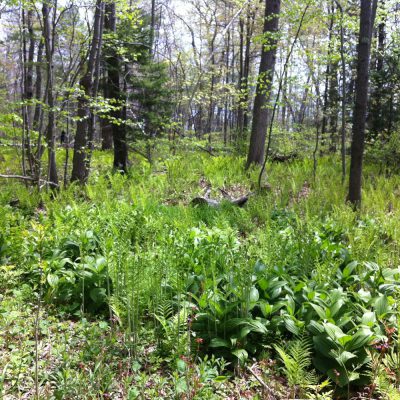 The city of Portland has some amazing patches of mature woodlands at Evergreen Cemetery, Four River Sanctuary, and Presumpscot River Preserve with a diversity of wildflowers, ferns, shrubs and trees. In the canopy are mature hemlock, oaks and other hardwoods, with an understory of witch-hazel, viburnum and hornbeam. In the spring, slow-growing wildflowers such as trout-lily, trillium, wood anemone, violet, and crane’s-bill take advantage of the sun reaching the forest floor before the tree leaves unfold. Many of these woodland plants do not exist in young forests and are relics from a time prior to colonization.
The city of Portland has some amazing patches of mature woodlands at Evergreen Cemetery, Four River Sanctuary, and Presumpscot River Preserve with a diversity of wildflowers, ferns, shrubs and trees. In the canopy are mature hemlock, oaks and other hardwoods, with an understory of witch-hazel, viburnum and hornbeam. In the spring, slow-growing wildflowers such as trout-lily, trillium, wood anemone, violet, and crane’s-bill take advantage of the sun reaching the forest floor before the tree leaves unfold. Many of these woodland plants do not exist in young forests and are relics from a time prior to colonization.
 Other Portland locations feature open grassy areas with meadow wildflowers. In colonial times, cemeteries were chosen for dry sandy soils that were not suitable for farming. Hawkweed, violets, bluets, wild strawberry, pussytoes, asters and goldenrods often grow on these sites. These plants provide a lot of food for pollinators if they are not mowed.
Other Portland locations feature open grassy areas with meadow wildflowers. In colonial times, cemeteries were chosen for dry sandy soils that were not suitable for farming. Hawkweed, violets, bluets, wild strawberry, pussytoes, asters and goldenrods often grow on these sites. These plants provide a lot of food for pollinators if they are not mowed.
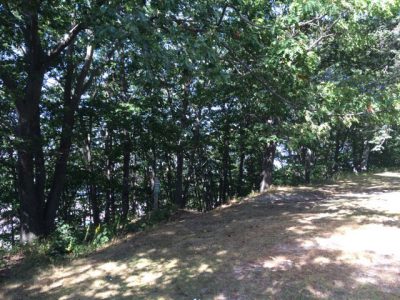 Many undeveloped lands in Portland are degraded habitat showing a mixture of native and invasive species, such as native oak or red maple, with invasives such as Asian honeysuckle, knotweed and Norway maple. What many people don’t realize is that insects feed on native plants, not exotics. Songbirds rely on the diverse, healthy insect population to feed their young. With some restoration, these areas could support many native plants, pollinators and songbirds.
Many undeveloped lands in Portland are degraded habitat showing a mixture of native and invasive species, such as native oak or red maple, with invasives such as Asian honeysuckle, knotweed and Norway maple. What many people don’t realize is that insects feed on native plants, not exotics. Songbirds rely on the diverse, healthy insect population to feed their young. With some restoration, these areas could support many native plants, pollinators and songbirds.
 Portland also has many areas that are completely devoid of plants. This is the charming historic part of Portland. Before the streets were paved, there were many more trees throughout the city. Lack of vegetation raises surface temperatures, and exacerbates flooding.
Portland also has many areas that are completely devoid of plants. This is the charming historic part of Portland. Before the streets were paved, there were many more trees throughout the city. Lack of vegetation raises surface temperatures, and exacerbates flooding.
 For remnant patches of native habitat to maintain biodiversity and survive into the future, these areas cannot be isolated. Ants disperse the seeds of many woodland plant species and can travel only a few meters; other pollinators can travel just several hundred meters. For this reason, Portland’s spectacular remnant forests need to be connected to each other within the city, reaching out into the broader landscape.
For remnant patches of native habitat to maintain biodiversity and survive into the future, these areas cannot be isolated. Ants disperse the seeds of many woodland plant species and can travel only a few meters; other pollinators can travel just several hundred meters. For this reason, Portland’s spectacular remnant forests need to be connected to each other within the city, reaching out into the broader landscape.
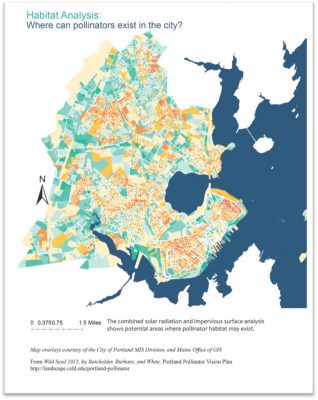 In the winter of 2015, Wild Seed Project engaged some graduate students from the Conway School of Landscape Design to study Portland for the potential to create pollinator corridors of native plants throughout the city. This map shows the 1900 acres of permeable surfaces in Portland that are potential native plant and pollinator habitat (green is better for pollinators, orange lower value).
In the winter of 2015, Wild Seed Project engaged some graduate students from the Conway School of Landscape Design to study Portland for the potential to create pollinator corridors of native plants throughout the city. This map shows the 1900 acres of permeable surfaces in Portland that are potential native plant and pollinator habitat (green is better for pollinators, orange lower value).
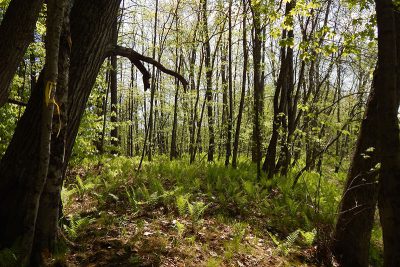
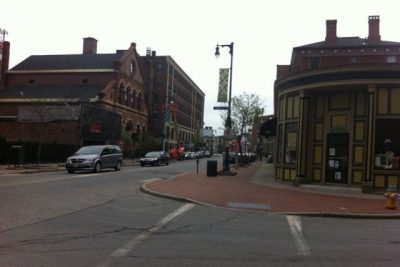
The students’ report, called the Portland Pollinator Vision Plan, outlines the opportunities Portland has to make a network of corridors of native vegetation in the city to enable bees, butterflies, birds and plants to live, reproduce and migrate across the landscape.
View the Portland Pollinator Vision Plan.
 Anywhere that there is a permeable surface, there are native species that can grow, even in tough urban conditions. In the sunny dry strips along roads and sidewalks, plantings of native drought-tolerant species from sandy or rocky habitats can thrive.
Anywhere that there is a permeable surface, there are native species that can grow, even in tough urban conditions. In the sunny dry strips along roads and sidewalks, plantings of native drought-tolerant species from sandy or rocky habitats can thrive.
 Chokeberry, wild rose, butterfly milkweed, black-eyed coneflower and many other native plants are adaptable to these tough urban sites. These plants would not be mulched, but instead have a sandy surface so that the ground nesting pollinators, such as many of our native bees, could reproduce.
Chokeberry, wild rose, butterfly milkweed, black-eyed coneflower and many other native plants are adaptable to these tough urban sites. These plants would not be mulched, but instead have a sandy surface so that the ground nesting pollinators, such as many of our native bees, could reproduce.
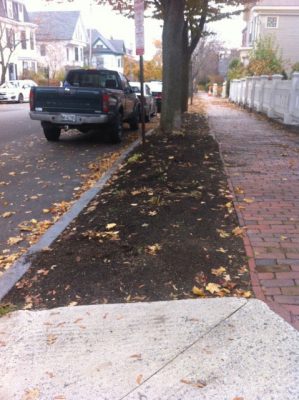
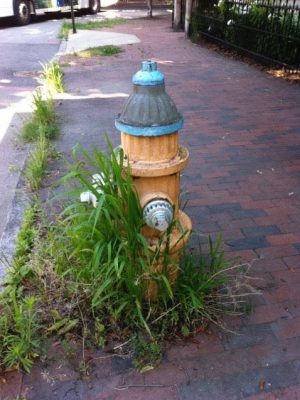
Portland has plenty of opportunities to remove some paving and create bioswale plantings to absorb rainwater, control flooding, and filter pollutants before they wash into our coastal waters. Many wetland plants can be flooded and survive dry spells and would work well in these situations.
 Blue vervain, blue flag iris, swamp milkweed, pussy willow and other shrubs, such as viburnums, dogwoods, sweetgale, buttonbush, elderberry, and clethra make great urban plants, support many pollinators and are beautiful and resilient.
Blue vervain, blue flag iris, swamp milkweed, pussy willow and other shrubs, such as viburnums, dogwoods, sweetgale, buttonbush, elderberry, and clethra make great urban plants, support many pollinators and are beautiful and resilient.
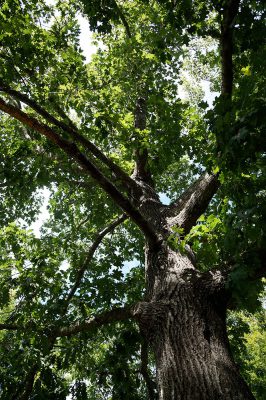 Our native oak trees are biodiversity magnets supporting up to 500 species of pollinating insects, birds, and other animals. Portland needs more street trees. NYC just planted a million trees—if they can do it, we can too. It will take a lot of private support, and working together with city officials to make this happen.
Our native oak trees are biodiversity magnets supporting up to 500 species of pollinating insects, birds, and other animals. Portland needs more street trees. NYC just planted a million trees—if they can do it, we can too. It will take a lot of private support, and working together with city officials to make this happen.
 There are many woodland plants that thrive in the dense shade of buildings or trees. Purple flowering raspberry, Canada anemone, ferns, and wood asters are just a few of the shade-loving and tough natives that will enliven a shady site and support pollinators and birds. No more expansive areas of mulch, let’s get these shady spots planted.
There are many woodland plants that thrive in the dense shade of buildings or trees. Purple flowering raspberry, Canada anemone, ferns, and wood asters are just a few of the shade-loving and tough natives that will enliven a shady site and support pollinators and birds. No more expansive areas of mulch, let’s get these shady spots planted.
 Everyone can do something. Add native plantings along the sidewalk, such as this planting of black-eyed coneflower. Window boxes and pots are great additions too. Native plants are very interactive with other life—people quickly notice how dynamic these plantings are compared to common garden plants.
Everyone can do something. Add native plantings along the sidewalk, such as this planting of black-eyed coneflower. Window boxes and pots are great additions too. Native plants are very interactive with other life—people quickly notice how dynamic these plantings are compared to common garden plants.
 Imagine the city of Portland with more of the vegetation that makes Maine beautiful and distinct. These habitat plantings would support the migration of pollinating insects and birds, and these green corridors would connect Portlanders with nature on a daily basis.
Imagine the city of Portland with more of the vegetation that makes Maine beautiful and distinct. These habitat plantings would support the migration of pollinating insects and birds, and these green corridors would connect Portlanders with nature on a daily basis.
This blog was originally presented at the Portland Trails 15×15 annual meeting on March 30, 2016.
Read more about urban habitat corridors in other metropolitan areas at Pollinator Pathway.
Native Gardening Blog
After removing disruptive introduced species, try planting these
Join Our Team!
Landscaping in partnership with native ecosystems is good for the planet. It’s good for us too.
Building Biodiverse & Climate-Resilient Habitats
Supporting Ash Protection Collaboration Across Wabanakik

